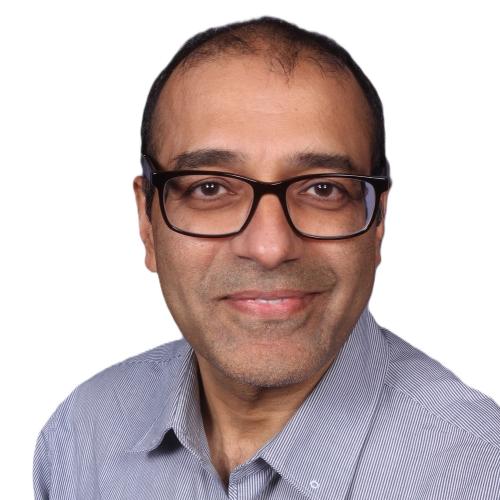Ph. D.
Medical Radiation Physics
McMaster University
2003

I am Associate Professor and Director of Medical Physics at Howard. I hold a MS in Physics and a MS in Nuclear Engineering. Following these, I completed a PhD in Medical Radiation Physics, with a focus on accidental biophysical dosimetry. I am a Diplomat of American Board of Radiology and Fellow of Canadian College of Physicists in Medicine.
Over the past twenty years, I have dedicated my career to working as a clinical physicist. In this role, I ensure the safety, precision, and accuracy of radiation delivery for cancer patients, contributing significantly to their treatment and care.
My research interests and contributions in the field of medical physics are diverse, where I have studied and developed dose modeling techniques and optimization strategies for radiotherapy, aiming to enhance treatment efficacy and patient outcomes. Additionally, I have explored the innovative use of 3D printing technology in radiotherapy, which has opened new avenues for personalized patient care.
My work also includes advancements in electron paramagnetic resonance dosimetry, radiochromic film dosimetry, a method that provides accurate dose measurements crucial for quality assurance in radiotherapy. Furthermore, I have conducted research in gamma and neutron spectrometry, which plays a vital role in the precise measurement and analysis of radiation.
Medical Radiation Physics
McMaster University
2003
This class is designed to construct a theoretical foundation for ionizing radiation dose calculations and measurements in a medical context and prepares graduate students for proper scientific presentations of in the field of x-ray imaging and radiation therapy. This course will cover the fundamental concepts of radiation physics, how various ionizing radiation interact with matter, and how the energy that is deposited in the matter, which can be determined in theory and practice. Specifically, a student completing this course will be able to do the following:
1. Understand and apply key concepts specific to energy deposition for both ionizing photon interactions and transport in matter and for energetic charged particle interactions and transport in matter.
2. Achieve a fundamental level which could be then built-on in other medical physics courses.
This class is designed to keep the learners abreast of recent innovations in medical physics, biomedical engineering and applied radiation sciences. The students will develop an understanding of the various topics through systematic medical physics related literature search, review articles, journal articles, and electronic resources to synthesize and prepare a presentation and submit weekly reports.
This course is designed to build on to the concepts of radiation interaction and dosimetry techniques and bring them into clinical realm of patient therapy. The students will learn clinical applications of radiation dose computation, and measurements as used in radiation therapy of various diseases including cancer. Ionizing radiation producing devices such as external beam photon therapy, electron beam therapy, brachytherapy, imaging modalities, simulation, treatment planning, radiation delivery, treatment verification and quality assurance will be the focus of this course. In addition to total body and total skin electron therapies, stereotactic radiotherapy, intensity/ volume modulated radiation therapy are also introduced in the last part of the course.
This class aims to keep learners updated on professional and ethical challenges in medicine, medical physics, biomedical engineering, and applied radiation sciences. Students will attend talks by leading experts in medical physics to understand and navigate these issues in their professional lives. Topics include the historical evolution and principles of medical ethics, such as the Nuremberg Code, Helsinki Declaration, and Belmont Report. The course covers professionalism, conflict of interest, confidentiality, publication ethics, plagiarism, physicist-physician-patient interactions, and relations with vendors and employers. It also addresses failure mode and effect analysis, leadership, negotiation skills, safety culture, errors in medicine, incident learning systems, and the role of professional organizations. Additionally, it includes lectures on Lean and Agile approaches in healthcare, communication skills, and managing conflicts.
This class is designed to keep the learners abreast of recent innovations in medical physics, biomedical engineering and applied radiation sciences. The students will develop an understanding of the various topics through systematic medical physics related literature search, review articles, journal articles, and electronic resources to synthesize and prepare a presentation and submit weekly reports.
My detail Bibliography is available at the National Library of Medicine https://www.ncbi.nlm.nih.gov/myncbi/rao.khan.1/bibliography/public/
Please visit the Radiological Physics Laboratory website, for more details about current and active areas and publications - https://sites.google.com/view/radiologicalphysicslab